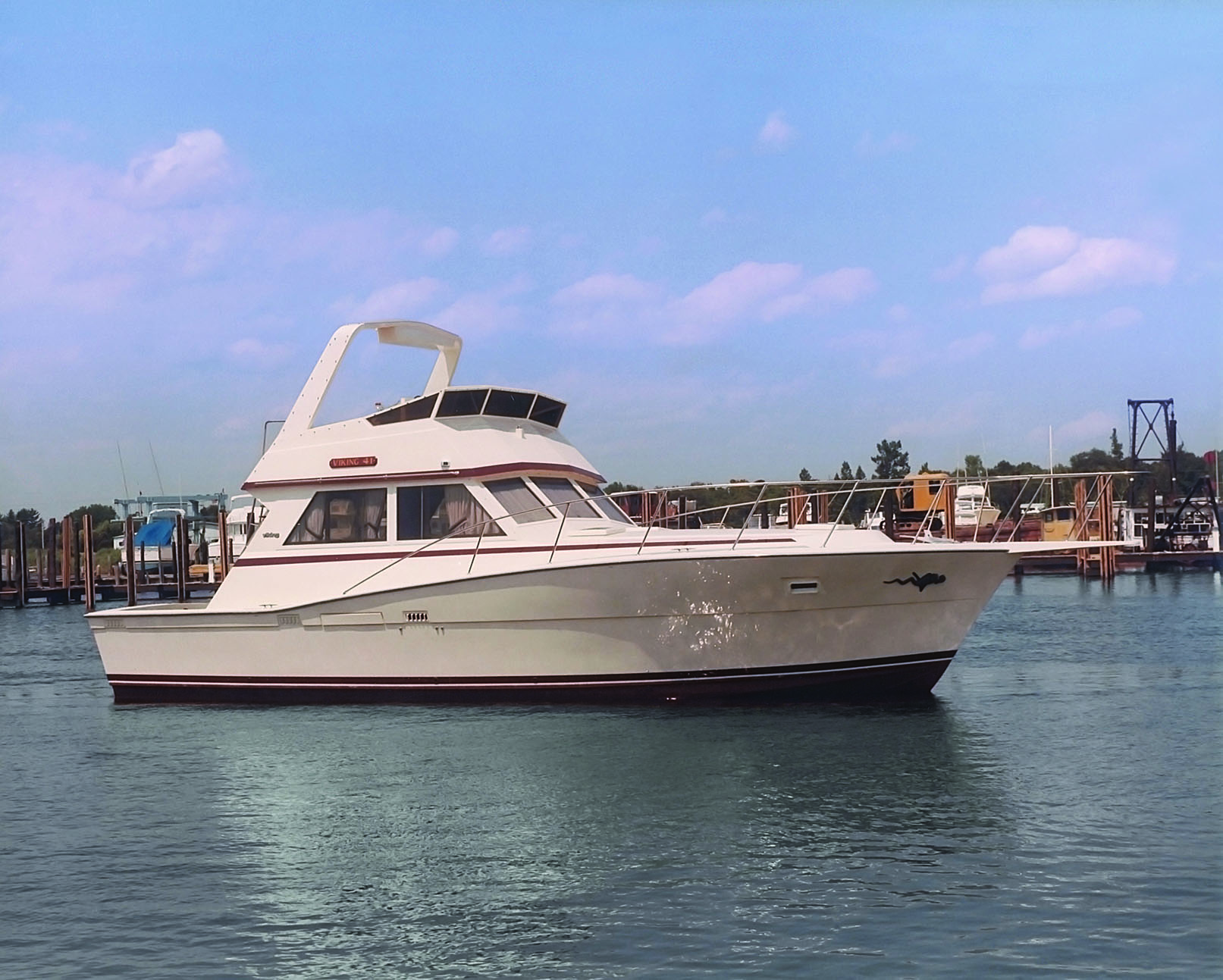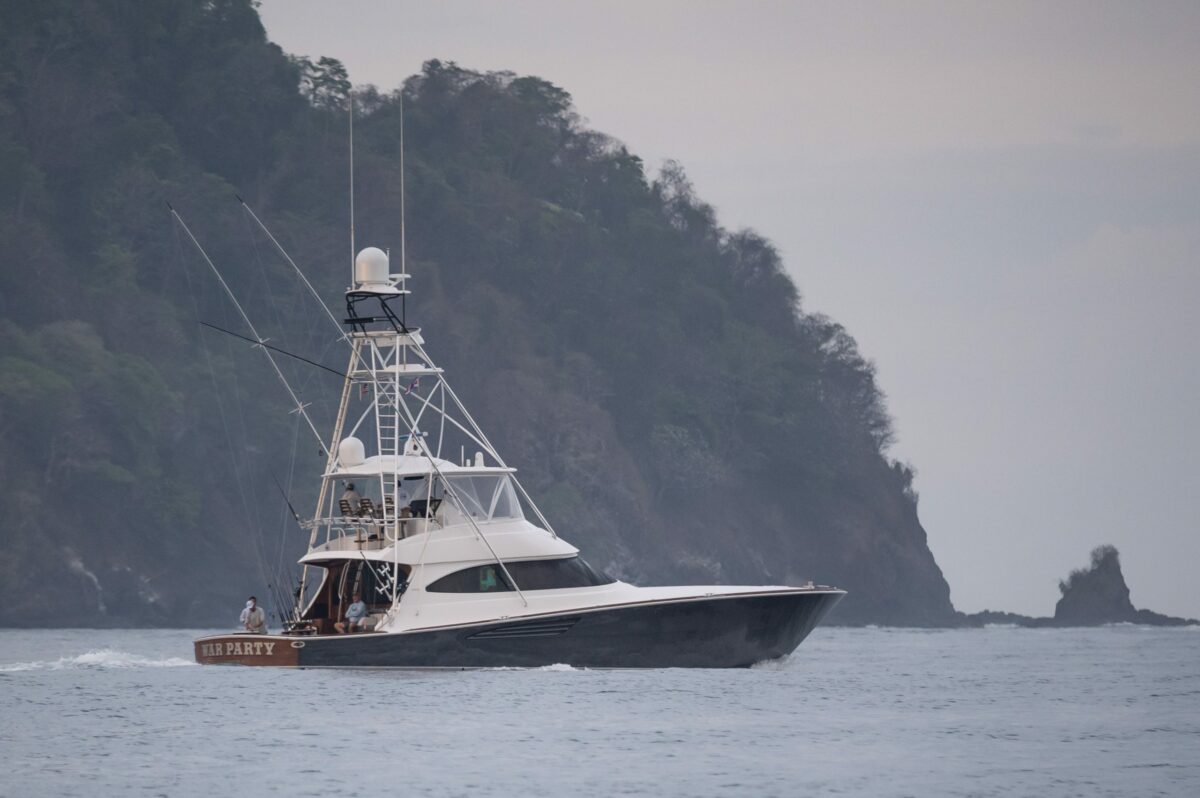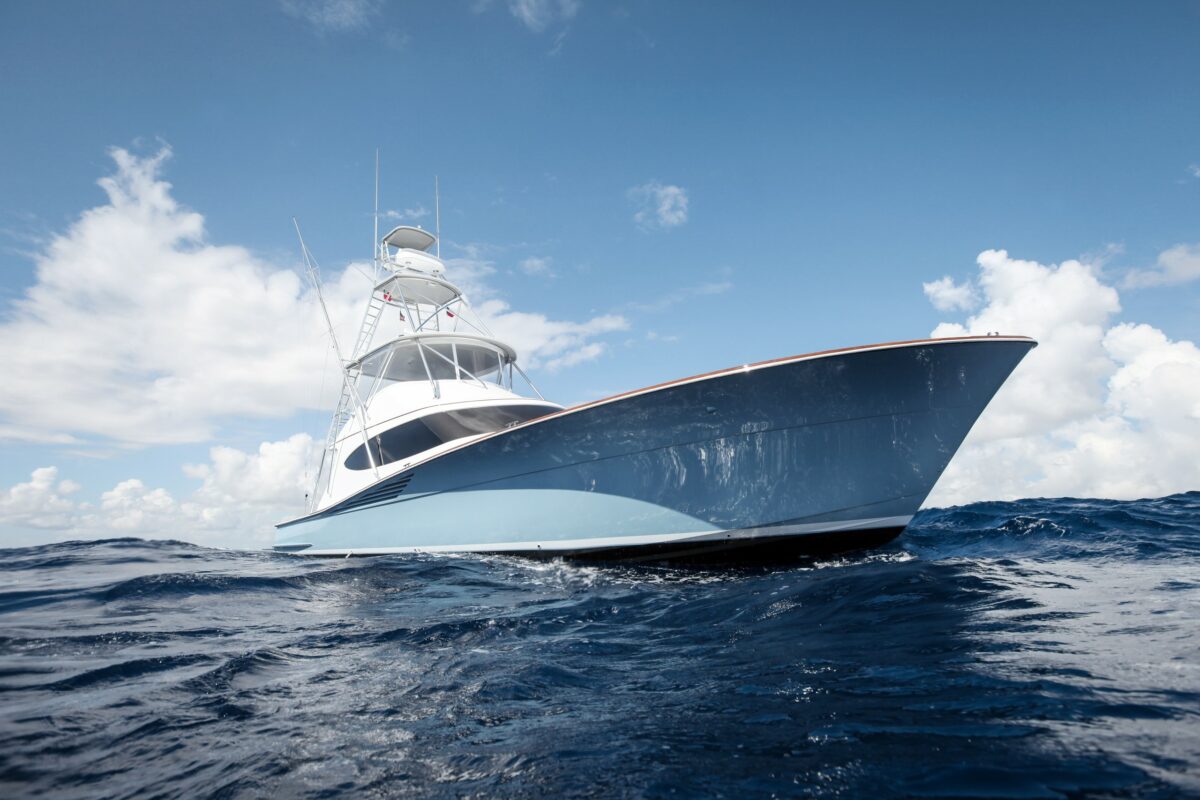To build any boat from scratch is a magical thing. Having the gumption to take a big pile of your own money and turn it into a pile of materials that you intend to turn into a boat goes way beyond my perception or capabilities. Taking another fella money and trying to do it for the first time must spin the term nerve wracking to incredible new heights. Nevertheless, there always a few pioneers who step up and make something new that the boat-building industry just cant ignore. Here an example of a boat that made a difference.
Viking Yachts, 40 Convertible
Viking Yachts started when brothers Bob and Bill Healey bought Peterson-Viking Builders, a small, struggling New Jersey builder of 37-foot, wooden sportfishing boats in 1964. Today, Viking represents perhaps the premiere builder of semi-custom fiberglass yachts in the industry, with over 4,000 Vikings delivered to date. When youve been building boats for over 55 years, youre bound to experience more than one game-changing milestone¦and Viking Yachts has managed to revolutionize the world of sportfishing boats several times over during the five decades it been in business.
 The boat that propelled us the most towards where we are today is probably the 55. It catapulted us to the 61, 65 and 74¦and those four boats became icons. But the 40/41 took us from being a wooden boat builder into fiberglass, says Patrick Healey, President and CEO of Viking Yachts. The company very first foray into fiberglass, in 1968, didnt start out all that promising, however.
They started out ass backwards, says Healey with a laugh. They were building 38-footers with a fiberglass top and a fiberglass flybridge, but with a wooden bottom. They didnt trust the strength of fiberglass for the hull, so they kept making the oak-planked hull. You couldnt beat that oak-planking for strength at that time, but it was just so heavy. They built 33 of those boats and they all sported our version of the deep-v. But at 33 feet, you needed a whole lot of horsepower to get it up and going. Once it got up it could run through anything, but with 454s Cruisader and Mercruiser gas engines, you didnt have the low-end torque to get all that weight going¦so they started on the 40-footer. And that when Bruce Wilson came along. He worked with Bill Hall and they both came up with the modified-v. And that was hull number one for the 40.
The boat that propelled us the most towards where we are today is probably the 55. It catapulted us to the 61, 65 and 74¦and those four boats became icons. But the 40/41 took us from being a wooden boat builder into fiberglass, says Patrick Healey, President and CEO of Viking Yachts. The company very first foray into fiberglass, in 1968, didnt start out all that promising, however.
They started out ass backwards, says Healey with a laugh. They were building 38-footers with a fiberglass top and a fiberglass flybridge, but with a wooden bottom. They didnt trust the strength of fiberglass for the hull, so they kept making the oak-planked hull. You couldnt beat that oak-planking for strength at that time, but it was just so heavy. They built 33 of those boats and they all sported our version of the deep-v. But at 33 feet, you needed a whole lot of horsepower to get it up and going. Once it got up it could run through anything, but with 454s Cruisader and Mercruiser gas engines, you didnt have the low-end torque to get all that weight going¦so they started on the 40-footer. And that when Bruce Wilson came along. He worked with Bill Hall and they both came up with the modified-v. And that was hull number one for the 40.

Combined, the Viking 40 and 41 models would sell more than 600 boats.













